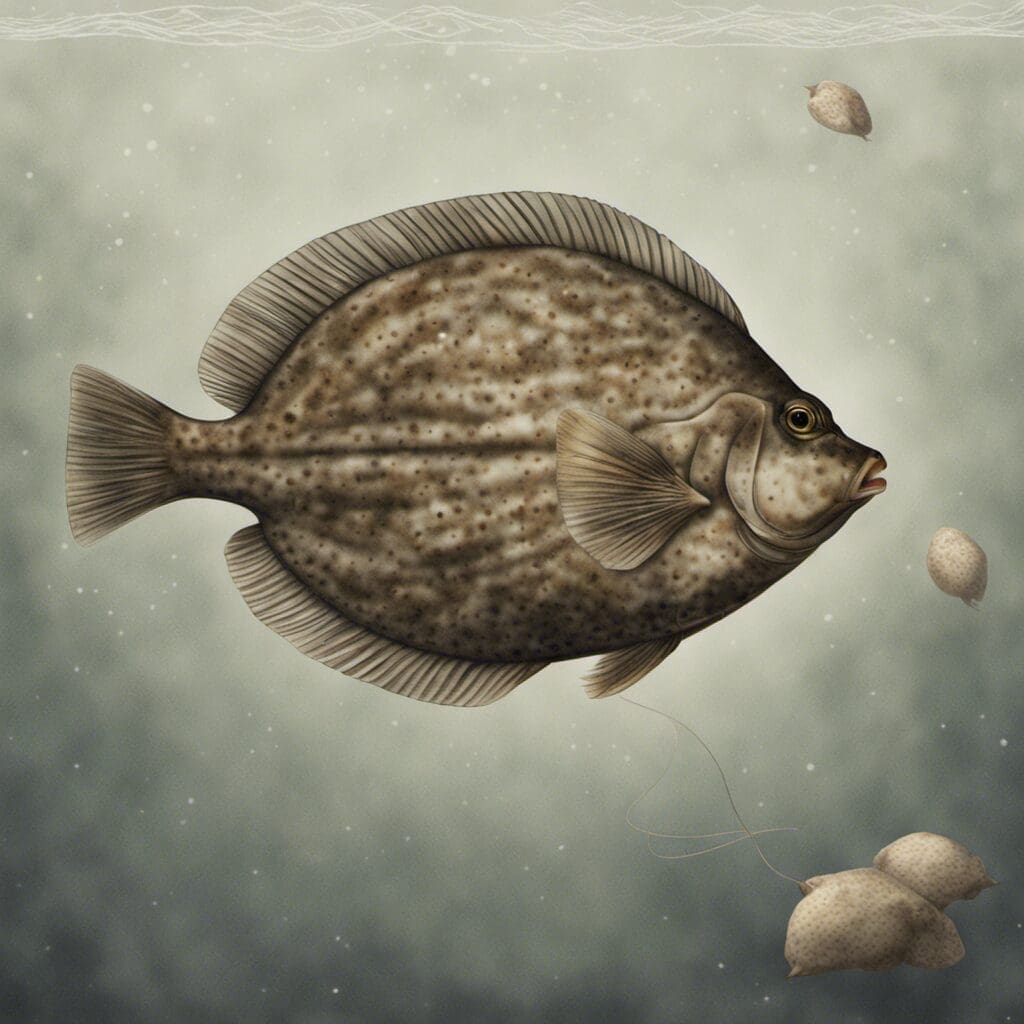Introduction
The Winter Flounder, scientifically known as Pseudopleuronectes americanus, belongs to the family Pleuronectidae. Known also as Blackback or Lemon sole, this species is considered a right-eyed flatfish.
Conservation Status
Currently, the Winter Flounder is listed as ”Not Evaluated” on the conservation status scale. However, some populations have seen declines due to pollution and overfishing.
Statistics
| Statistical Category | Average | Range |
|---|---|---|
| Length | 38 cm | 15-64 cm |
| Weight | 1 kg | 0.5-3 kg |
| Lifespan | 15 years | 9-20 years |
Distribution
The Winter Flounder is found in the North Atlantic, with a range from Labrador in Canada down to Georgia in the United States. These fish have also been spotted in parts of Europe. They tend to stay in place rather than migrate, but changes in water temperature can prompt movement.
Habitats
Typically, Winter Flounder prefers shallow waters and can often be found in estuaries or nearshore waters. They can tolerate a considerable range of temperatures, from near freezing up to 20°C.
When and Where to See
- Winter flounders are most often found during the winter and early spring.
- They are more likely to be spotted during the day when they come out to feed.
Best Fishing Locations
Some of the best places to catch Winter Flounder include:
- Boston Harbor, Massachusetts
- Chesapeake Bay, Maryland
- Long Island Sound, New York
- Narragansett Bay, Rhode Island
- Nantucket Sound, Massachusetts
- Buzzards Bay, Massachusetts
- Cape Cod Bay, Massachusetts
- Raritan Bay, New Jersey
- Peconic Bay, New York
- Barnegat Bay, New Jersey
How to Catch
- The preferred baits for Winter Flounder include sea worms and clams.
- Bottom fishing is usually the best technique to employ.
- Fishing for Winter Flounder is often most successful in the early morning and late afternoon.
Identification Guide
Winter Flounders are brown to black on the eyed side, with a pale yellow to white underside. Their lateral line arches above the pectoral fin, which can be used to distinguish them from similar species.
Culinary
The Winter Flounder is well-regarded for its sweet and delicate, white, lean meat. It’s versatile and can be used in a variety of recipes, from grilling to frying to baking.
Additional Information
Winter Flounder is a bottom-dwelling species. Their primary predators include fish species like cod and haddock, seabirds, marine mammals, as well as humans. Historically, the Winter Flounder has been the focus of a commercial fishery and is regarded as one of the finest seafoods by many.
References and Further Reading
For further details about the Winter Flounder, you may check out the following resources: Fishbase.org and NOAA Fisheries .

